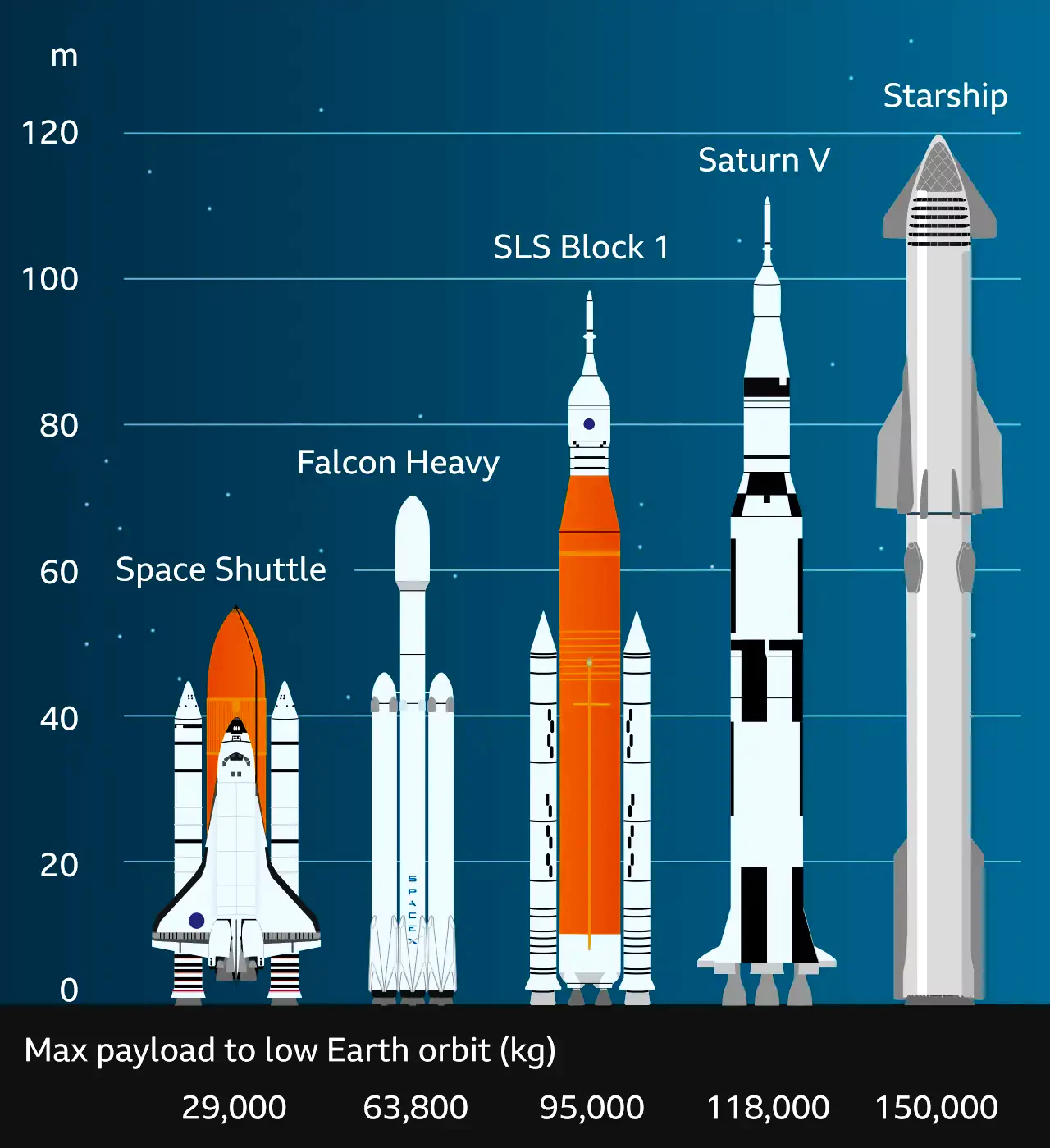SpaceX’s Starship rocket recently had its first fully successful test flight, with both the booster and spacecraft gently landing in the ocean after an hour-long flight.
SpaceX’s massive Starship rocket records first successful test flight

- This was SpaceX’s fourth attempt to launch the massive Starship.
- The Super Heavy booster detached and landed softly in the Gulf of Mexico.
- The spacecraft travelled halfway around the Earth and made a controlled splashdown in the Indian Ocean.
What is Starship?
- Starship is a two-stage heavy lift vehicle.
- It is designed for carrying crew or cargo to Earth orbit, the Moon, Mars, and beyond.
- The entire rocket system is nearly 120 meters tall, making it the largest rocket ever flown.
Enroll now for UPSC Online Course
Role of private sector in space in india
- Skyroot Aerospace: Skyroot became partner with ISRO in 2021.
- It has access to ISRO’s facilities for developing and testing subsystems.
- Bellatrix Aerospace: This aerospace company focuses on propulsion systems and other satellite propulsion technologies.
- This innovation helps in satellite deployment and maneuverability.
- Dhruva Space: Dhruva Space provides satellite bases services and builds small satellites.
- Pixxel Space India Pvt Ltd: It aims to create a constellation of earth observation satellites.
|
-
- It is taller than the Saturn V (111 meters) that took Neil Armstrong to the Moon.
- Starship has two stages:
- The Super Heavy booster: It features 33 Raptor engines arranged in three concentric rings.
- The Starship spacecraft: It uses six Raptor engines, with three specifically optimised for vacuum conditions.
- Objective: To significantly lower launch costs through economies of scale.
Key Features
- Fully Reusable Design: Starship is designed for rapid reuse, aiming to significantly lower launch costs.
- Massive Size: It is one of the largest rockets ever built, capable of carrying crew and cargo.
- Powerful Engines: SpaceX’s Raptor engines use liquid methane and liquid oxygen as propellants in a ratio of 3.6:1.
- Advanced Heat Shield: Equipped with a high-tech heat shield to endure the extreme temperatures during reentry into Earth’s atmosphere.
Check Out UPSC NCERT Textbooks From PW Store
How Starship Revolutionizes Space Travel Cost?
- Enormous Payload Capability : Starship can transport a vast amount of cargo, up to 150 tons to Earth orbit and 100 tons to the Moon or Mars.
- This surpasses previous missions, reducing the need for multiple launches.
- In-Space Refueling: Starship can be refueled in space by other Starship vehicles, akin to topping up fuel for a long flight.
- This enables carrying more cargo to distant destinations like Mars without needing all the fuel upfront.
- Complete Reusability: Unlike conventional rockets discarded after launch, Starship is entirely reusable.
- The booster and spacecraft return to Earth and launch again, significantly lowering manufacturing costs per flight.
Benefits of the Mission
- Enhanced Scientific Missions
- Cheaper launches empower scientists to construct larger and more sophisticated equipment, such as powerful telescopes or deep-drilling rigs for Mars exploration, expanding avenues for scientific discovery.
- Revelation of Secrets
- Retrieving larger samples from the Moon and other celestial bodies allows scientists to unveil mysteries about our solar system and the origins of life.
- Increased Accessibility to Space
- Lower launch costs make space travel more affordable for scientific and commercial ventures, fostering greater accessibility to space.
Enroll now for UPSC Online Classes
Challenges Facing Starship
- Safety and Cost Concerns: Historically, balancing reusability with affordability has been a major challenge in spaceflight programs.
- Worker Safety Concerns: A recent investigation raised concerns about worker safety during Starship’s rapid development.
-
- Therefore, Balancing breakneck speed with worker well-being is crucial.
![]() 12 Jun 2024
12 Jun 2024

